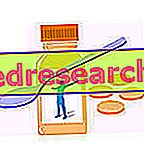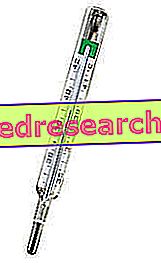ESTROFEM ® is a drug based on Estradiol hemihydrate
THERAPEUTIC GROUP: Natural estrogens
IndicationsAction mechanismStudies and clinical effectiveness Usage and dosage instructionsWarnings Pregnancy and lactationInteractionsContraindicationsUndesirable effects
Indications ESTROFEM ® - Estradiol
ESTROFEM ® is used as a hormone replacement therapy in post-menopausal women, both in the control of post-climacteric symptoms and in the prevention of diseases associated with this condition such as osteoporosis.
Action mechanism ESTROFEM ® - Estradiol
The estradiol contained in ESTROFEM ® is a natural estrogen, with a chemical structure identical to that of the endogenous man, produced in the laboratory.
The use in the clinical setting is due to the important effects on the health status of women, useful for alleviating the symptoms induced by the lack of estrogen, typical of the post-menopausal period.
Hot flashes, neurological disorders such as anxiety, panic attacks, difficulty in falling asleep, vaginal atrophy and vasomotor instability are the main manifestations of the post-climacteric period that are often accompanied by more serious clinical pictures such as weight gain and osteoporosis.
ESTROFEM ® taken orally guarantees estradiol present in micronized form to be readily absorbed from the gastro-intestinal tract, reaching maximum plasma concentration in about 4-6 hours.
After a half-life of about 14-16 hours, it is metabolized to the hepatic level and eliminated via the bile and reabsorbed through the enterohepatic circulation, with subsequent structural variations that lead to the attainment of inactive metabolites which can be eliminated mainly through the urine.
Studies carried out and clinical efficacy
1. ESTROGENIC THERAPY AND VALUES OF HOMOCYSTEINE
Yüksel H, Cobanoğlu M, Odabaşi AR, Sezer SD, Küçük M, Serter M.
Homocysteine is an important blood predictor of the risk of developing cardiovascular diseases. Unfortunately, hormone replacement therapy has not been effective in reducing the concentrations of this marker, preserving women from this risk.
2. EXTRADIOLO AND SCHIZOFRENIA
Study that seeks to clarify the molecular mechanism underlying the protective effects of sex hormones against schizophrenia. More precisely, it appears that estradiol therapy may modulate certain brain activities, through the activation of specific receptors such as 5-HT.
3. ESTROGENIC THERAPY AND LIPOPROTEIN
The plasmatic level of lipoproteins is an independent risk factor for the development of premature coronary diseases. Menopause often leads to a significant increase that can be effectively counteracted with HRT as shown in this study in which a decrease of 8.12 mg / dL was observed in one year of treatment.
Method of use and dosage
ESTROFEM ® Estradiol 2 mg coated tablets :
oral therapy is used in the initial phases of the treatment of the minimum dose useful to guarantee the therapeutic effect.
An adjustment of the dosage should be established by the doctor only after a careful evaluation of the biological efficacy and the presence of any side effects.
Medical supervision is essential during all stages of treatment, from the determination of the dosage to the possible suspension of therapy.
ESTROFEM ® being a product exclusively based on estradiol, it should not be used alone in non-hysterectomised women, but combined with a progestin, in order to reduce the important side effects at the uterine level.
Warnings ESTROFEM ® - Estradiol
Hormone replacement therapy with oral estrogen should be carefully supervised by medical personnel both in the initial stages of dosage definition and in the subsequent maintenance period.
The potential side effects described in the course of therapy could in fact turn out to be more frequent in patients with particular predispositions such as endometriosis, history or familiarity for dependent thromboembolic or estrogen diseases, hypertension, liver diseases, diabetes, migraine and autoimmune diseases, for which it would be particularly important undergo periodic check-ups.
It is also useful to remember that estrogen therapy increases the risk of developing breast cancer, endometrial cancer, breast cancer, coronary heart disease and stroke.
PREGNANCY AND BREASTFEEDING
Treatment with ESTROFEM ® is also contraindicated during pregnancy and in the subsequent period of breastfeeding, although different studies show the absence of teratogenic and mutagenic effects on the fetus accidentally exposed to estrogen.
Interactions
The oral administration of estradiol, followed by a first-pass metabolism, exposes the drug to potential pharmacological interactions, capable of altering the normal efficacy of the therapy.
These variations in terms of concentration and efficacy of the substitution therapy are due to the high susceptibility of the liver enzymes responsible for the metabolism of estradiol, to inducers or inhibitors of their activity.
Active ingredients such as phenobarbital, phenytoin, carbamazepine, rifampicin, rifabutin, ritonavir and nelfinavir, by altering the functionality of cytochrome P450 enzymes, may alter estradiol plasma concentrations leading to a reduction in efficacy and significant changes in uterine bleeding.
Contraindications ESTROFEM ® - Estradiol
The use of ESTROFEM ® is contraindicated during pregnancy and lactation, in patients with estorgeno-dependent carcinomas, breast carcinoma, acute thrombophlebitis, recent embolic thrombus disease, history of thrombus embolism, liver disease, porphyria, untreated endometrial hyperplasia, undiagnosed vaginal discharge and of course in case of hypersensitivity to the active ingredient or to one of its excipients.
Undesirable effects - Side effects
Oral estradiol therapy exposes the patient to numerous side effects, both acute and chronic and progressive.
Nausea, vomiting, abdominal pain, weight changes, increase in size and breast tension, changes in liver function, alterations in glucose tolerance, migraine, palpitations, general malaise, dizziness, depression, libido changes, endometrial hyperplasia, incontinence urinary, cystitis, hypercholesterolemia, dyspnea and rhinitis are the side effects most frequently encountered in the early stages of therapy, and which fortunately tend to regress spontaneously in the following months.
However, most efforts are focused on assessing the real risks induced by estradiol replacement therapy in relation to the development of breast and endometrial carcinomas as well as coronary and cardiovascular diseases.
Note
ESTROFEM ® is salable only under medical prescription.



